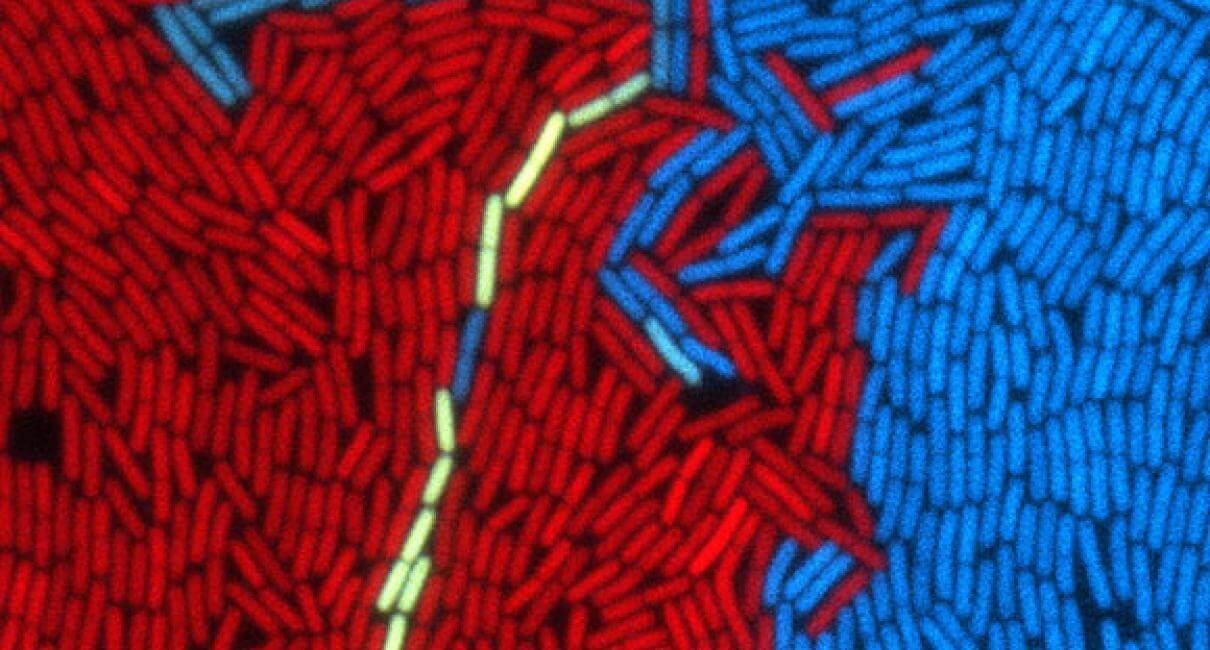The researchers discovered a new mechanism for communication between bacterial viruses - similar to the game theory of humans, phages also weigh all the options before them and finally make an informed decision before moving from a dormant state to a state of attack

A new study by Tel Aviv University found that, similar to the game theory of humans, phages also weigh all the options before them and finally make an informed decision before moving from a dormant state to an attack state. The research was conducted under the leadership of Prof. Avigdor Elder from the Shemunis School of Biomedical Research and Cancer Research at Tel Aviv University, together with his students and partners from the Weizmann Institute of Science. The study was published this month in the journal Nature Microbiology.
Phages are viruses that attack bacteria. Many phages are able to exist in one of two states: an active state (lysis), in which the phages attack the bacterium and destroy it, and a dormant state in which the phages are in a passive state inside the bacterium and replicate with it but do not perform destructive actions (lysogeny). Phages of this type have to decide whether to enter the dormant or aggressive state each time they infect a new bacterium. If they decide to enter the dormant state, the phages must decide when to "wake up" and go into the offensive state. As in any dilemma, it is important that the decision is based on solid and reliable information.
The researchers explain that until today it was evident that the main information on which the phages are based before deciding to wake up, is the condition of the specific bacteria in which they are hosted. The scientific assumption was that as soon as the bacterium shows significant damage to its DNA (a sort of "death pulse"), it pays for the host phage to leave it, and try its luck at infecting neighboring bacteria.
The current study discovered another mechanism for communication between bacteria and viruses and according to which in certain families of phages a more complex decision strategy has developed, a kind of "phage game theory" in which the information that reaches the phage's door does not come only from the host bacterium but also from neighboring bacteria .
Prof. Avigdor Alder explains: "When the virus is dormant, inside the bacterial cell it forces the bacteria to constantly secrete small communication molecules called Arbitrium, which it is able to listen to through a designated receptor. Therefore, a high level of these molecules indicates that the neighboring bacteria also already contain phage. In such a case, even if there is DNA damage, the phage is prevented from switching to the aggressive state. Since each bacterium can contain only one dormant phage, the phage's decision is wise - it is better to let the host bacterium try and repair itself and not 'betray' it, since the rest of the neighbors are already 'occupied'."
During the research, Prof. Alder and his team used a series of genetic and biomolecular methods aimed at following the biochemical communication signals between the bacteria and the phages. In a previous article, the researchers showed by using fluorescent labeling, that the communication used by the phage and a large family of similar communication systems (more generally known as 'quorum sensing' systems) are used to sense close neighbors only. "In fact, the bacteria have developed two separate communication systems, one for long-term communication and another for short-term communication only, which is used by them to sense the state of their immediate neighbors," says Prof. Alder, "in the case of the phage, communication is controlled by it, and all that interests it is Are his close neighbors, whom he can easily infect, already occupied or not."
Prof. Elder concludes: "Several years ago, Prof. Rotem Sorek's group from the Weizmann Institute first identified communication systems between phages. These systems have long been known among other molecular parasites of bacteria (called plasmids). The innovation in our work is the understanding that phages use communication even in the dormant state and that we were able to decipher critical components for understanding the way in which phages combine information about the state of their host and information about the state of their neighbors. In doing so, we took another important step towards deciphering the world of communication and the 'behavioral economy' of viruses. Phages have an excellent ability to perform intelligent data processing and make the decision that will lead to their optimal survival. It will be interesting to see if viruses of more complex creatures that are faced with similar decisions have also developed parallel methods of communication."
More of the topic in Hayadan:
